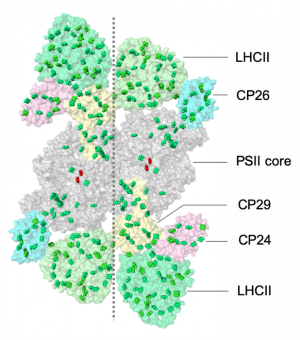Research
Published 17 March 2020Understanding photosynthesis

Lauren Nicol holds a Rutherford Foundation International PhD Scholarship. Her research focuses on understanding how plants adopt to damaging light conditions during photosynthesis. This work has recently been published in the prestigious Nature Plants
Photosynthesis is the most important biological process on Earth, it provides us with food, fibre, fuel and the air we breathe. Despite how remarkable and complex this process is, it is also relatively inefficient. Typically, less than 5% of the solar energy a plant receives will be converted into biomass. It is therefore essential to obtain a detailed understanding of the molecular mechanisms involved in photosynthesis if we are to increase photosynthetic productivity and enhance crop yield.
Of particular interest is how photosynthesis is regulated to cope with dynamic light environments. Plants are frequently exposed to light intensities which exceed their photosynthetic capacity and the excess energy must be dissipated before it can cause irreversible damage to the photosynthetic machinery. This energy dissipation is known as non-photochemical quenching (NPQ) and the molecular details of which are far from fully understood.
It is generally accepted that NPQ occurs in the light-harvesting antenna of Photosystem II. This group of pigment-protein complexes, which normally act to increase the absorption cross-section of photosynthesis, are thought to switch into a quenched conformation and/or organisation. However, it is not known which of the pigment-protein complexes are responsible for this.

The Photosystem II supercomplex. Image: supplied
To determine the location of the quenching site(s) Ms Nicol and her colleagues have been studying mutants of Arabidopsis thaliana lacking different pigment-proteins complexes in the Photosystem II antenna. The investigation showed that the majority of quenching originated in two distinct sites, LHCII and the PSII core antenna, with very little contribution from the monomeric antenna proteins, CP24, CP26 and CP29. This work has recently been published in the prestigious journal Nature Plants (5, 1177-1183 (2019)).
Understanding the molecular details of NPQ is a necessary step in fine-tuning the response of plants to variable light conditions. Models have shown that by increasing the speed of NPQ induction and recovery, crop carbon intake could increase by as much as 25%.
About Lauren Nicol
Lauren Nicol has a Bachelor of Science and an Honours degree in Biochemistry and Plant Biotechnology from the University of Otago. She was awarded a Rutherford Foundation International PhD Scholarship to undertake PhD studies at Vrije University Amsterdam in The Netherlands. She is hoping to finish up her PHD within the next 6 month and return to New Zealand after than to continue her research.
RESEARCHER
Lauren Nicol
ORGANISATION
Vrije Universiteit Amsterdam, The Netherlands
FUNDING SUPPORT
Rutherford Foundation
CONTRACT OR PROJECT ID
RFT-VRU1501-IP
